Charts of the Week
Current economic trends from 26 to 30 October 2020: electricity consumption, traffic of electronically tolled vehicles, consumer prices and other charts
The available data for the second half of October indicate around 5% lower electricity consumption and freight traffic than in the same period of last year. The year-on-year fall in consumer prices decreased in October, the year-on-year lower prices being mainly due to lower prices of oil products and semi-durable and durable industrial goods. After several months of improvement, turnover in trade and most service activities declined in August. Turnover in accommodation and food service activities increased again, which was a consequence of a greater focus on the domestic market in the summer months due to the introduction of restrictions on travel abroad and the continued use of tourism vouchers. Turnover in accommodation and food service activities was nevertheless markedly lower year on year in the first eight months (–31.6%).
Electricity consumption, October 2020
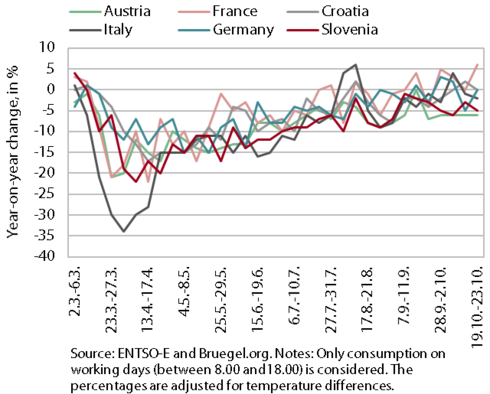
The year-on-year decline in weekly electricity consumption did not change significantly after the renewed declaration of the epidemic in the second half of October. Electricity consumption between 19 and 23 October was 5% lower year on year, which is similar to the decline in the first half of October. Among Slovenia’s main trading partners, a similar year-on-year decline was recorded in Austria (–6%), while others had smaller declines. In Italy consumption was down 2% year on year, while in Germany and Croatia it remained roughly the same as last year. Only France had higher consumption year on year, by 6%.
Traffic of electronically tolled vehicles on Slovenian motorways, October 2020
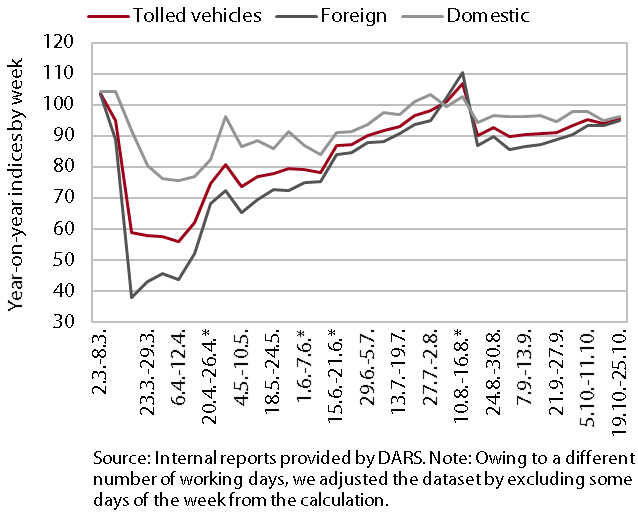
Freight traffic on Slovenian motorways increased slightly in October, but remained lower than before the epidemic. After a sharp fall following the declaration of the epidemic, it increased more markedly from mid-June to mid-August. Then it fell again and remained around 10% below the comparable last year’s level until the beginning of October, when it increased again slightly. In the week between 19 and 25 October, it lagged 5% behind the comparable last year's level, similarly in foreign and domestic hauliers.
Consumer prices, October 2020
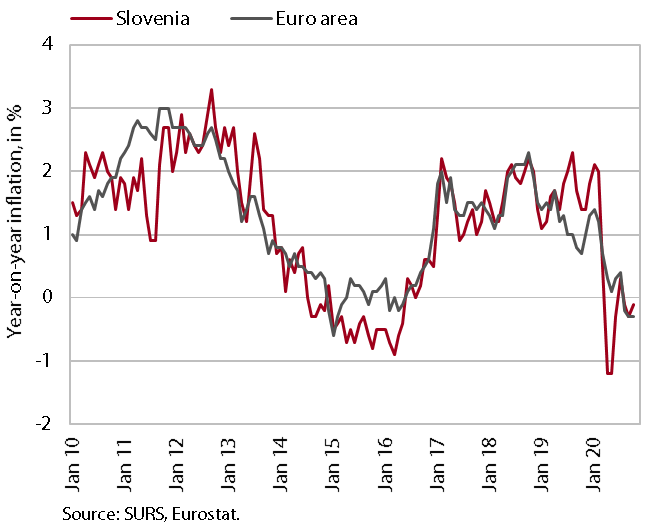
The year-on-year decline in consumer prices decreased in October. The main factor in the decline remained around one fifth lower prices of oil products. Prices of durable and semi-durable industrial goods also remained down year on year. The decline in prices of durables otherwise slowed significantly in October due to the arrival of new collections of clothing and footwear, which contributed to a fall in the year-on-year deflation recorded in the last three months. Growth in food prices maintained its relatively high level (3.6%), while growth in services prices remained moderate (at around 1%). Owing to higher excise duties, prices of tobacco products rose by 5.3% in October, contributing around 0.2 p.p. to inflation.
Trade, August 2020
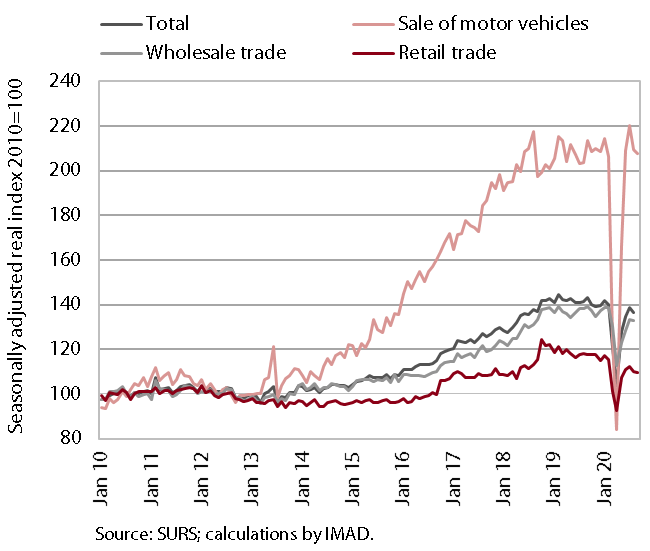
Turnover in trade fell again in August and, according to preliminary data, also in September. In August, turnover dropped in all main segments, the most in the sale of motor vehicles, where it had also fluctuated the most in previous months. Despite a decline, which also continued in September according to preliminary data, turnover in the sale of motor vehicles remained roughly the same year on year. Turnover in retail trade remained significantly lower than in the same period of last year, mainly as a consequence of a quarter lower turnover in automotive fuels. This was probably also due to lower tourist transit in the summer, in addition to lower freight transport and lower sales of fuels to households. Turnover in retail trade in non-food products remained significantly higher year on year, also as a consequence of higher online sales, as the internet remained one of the main shopping channels after the lifting of restrictions imposed during the first wave of the epidemic.
Market services, August 2020
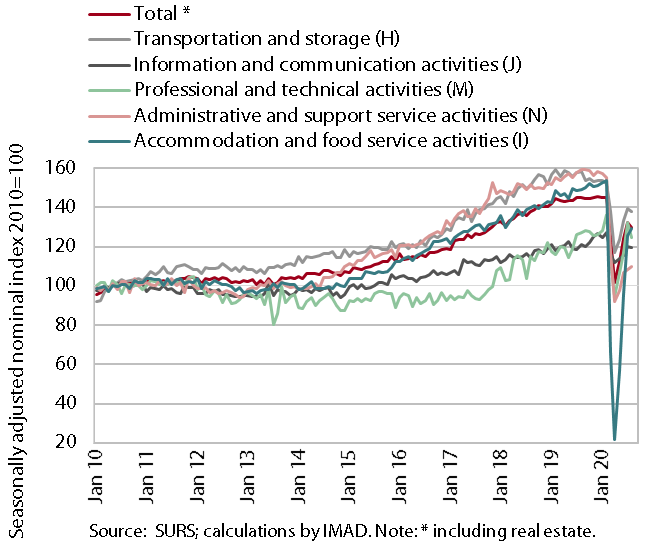
After three months of recovery, turnover in market services declined in August and was around 11% lower than before the outbreak of the epidemic. The decline was largest in professional and technical activities, mainly due to a fall in turnover in architectural and engineering services. This was followed by a fall in transportation, as public passenger transport was still strongly restricted. Turnover in information and communication activities remained at the previous month’s level. After plunging during the epidemic, turnover in accommodation and food service activities strengthened at the monthly level, but remained considerably lower year on year in the first eight months (–31.6%). Amid additional restrictions on travel abroad, August’s increase was a consequence of a stronger focus on the domestic market and the continued use of tourism vouchers, which contributed to an increase in overnight stays by domestic tourists; the number of foreign tourists remained low. Turnover growth also continued in administrative and support services, with rising turnover in both travel and employment agency activities.
